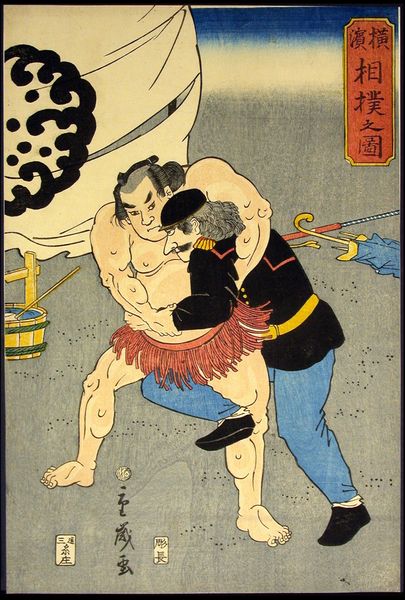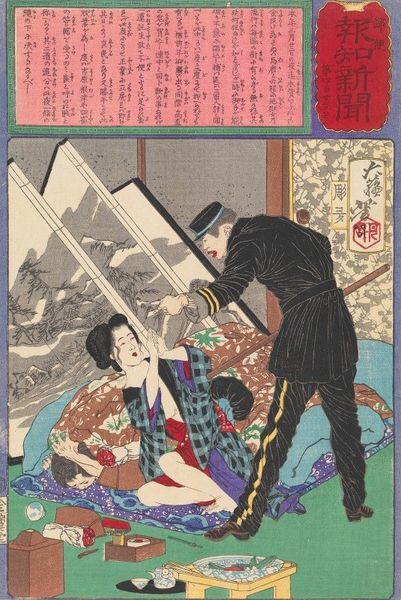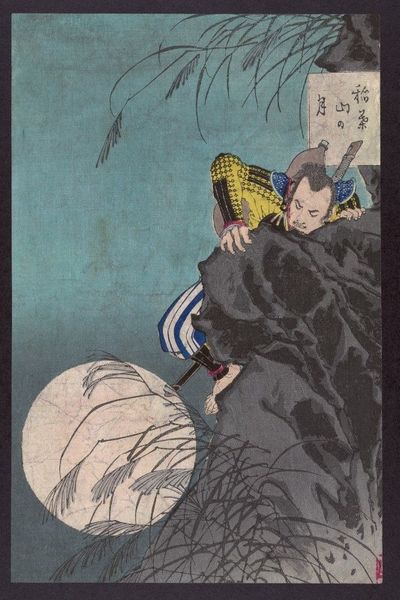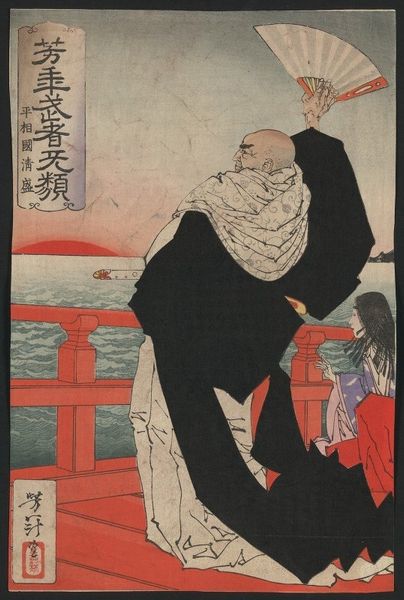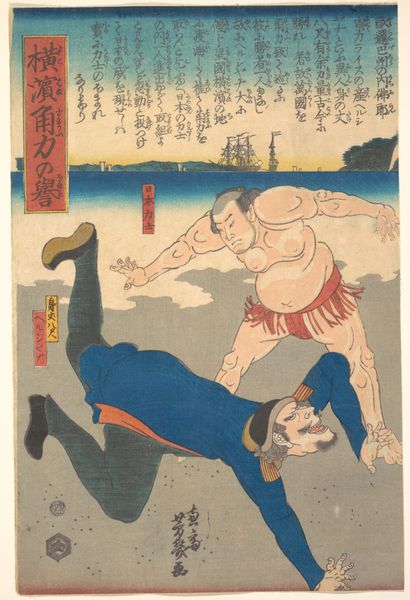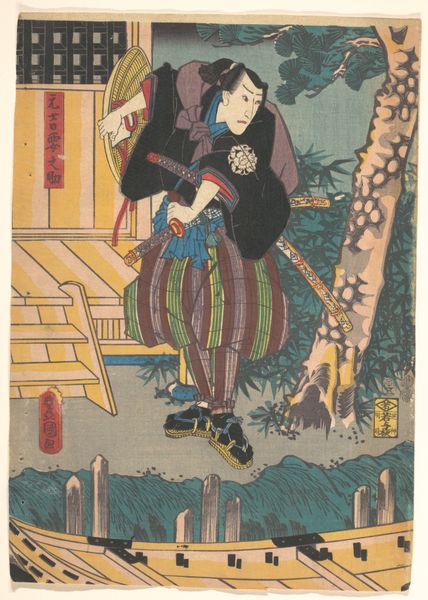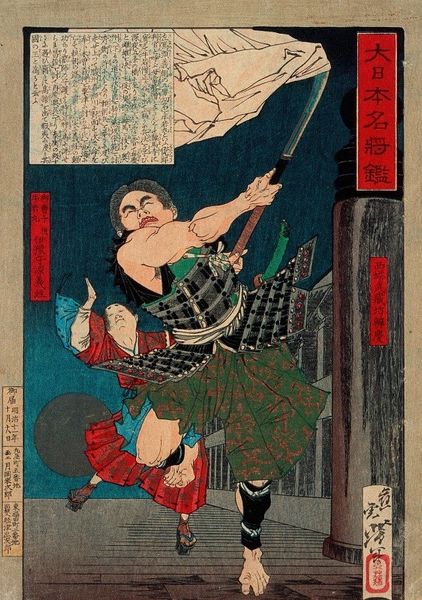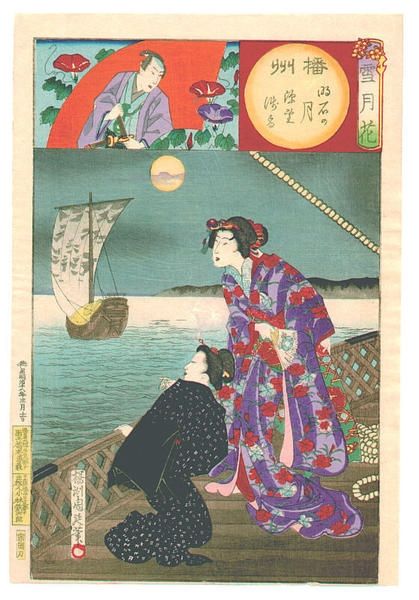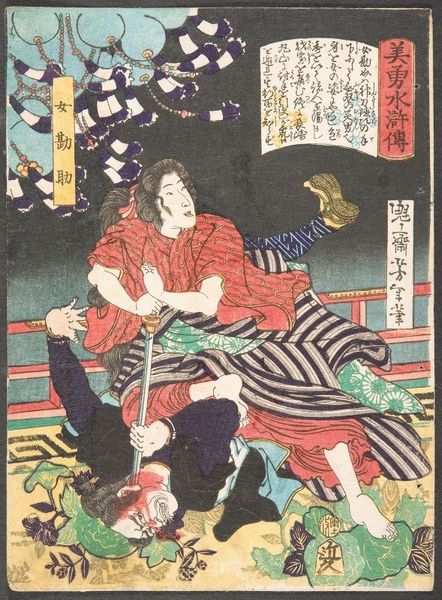
Copyright: Public Domain: Artvee
Tsukioka Yoshitoshi’s woodblock print depicts a dramatic rescue by a policeman, Aizawa Ihei. It exemplifies the Meiji era’s fascination with modernization and social order. Produced in Japan during a period of rapid Westernization, the print reflects the government's effort to establish a modern police force as a symbol of progress and safety. The heroic portrayal of Aizawa Ihei suggests the artist's desire to reinforce the image of the police as protectors of the people. The inclusion of details such as the Western-style uniform indicates the influence of European culture on Japanese institutions. The print's narrative quality highlights the importance of moral behavior and civic duty, values that were emphasized by the Meiji government. Yoshitoshi's woodblock serves as a visual representation of the changing social and political landscape of Meiji-era Japan. To understand the print's context better, we might look to police archives, newspaper reports and other prints and illustrations from the period. Doing so allows us to explore the complex relationship between art, power, and social change.
Comments
No comments
Be the first to comment and join the conversation on the ultimate creative platform.
